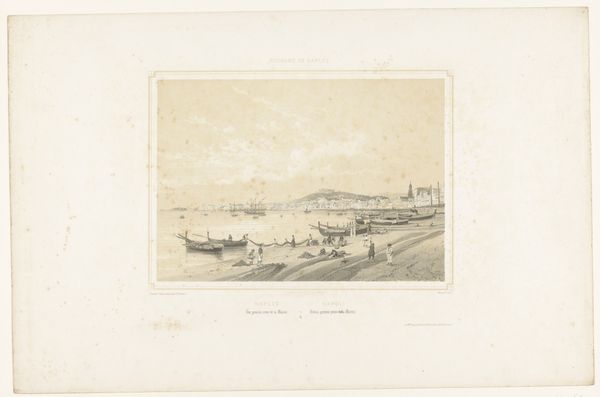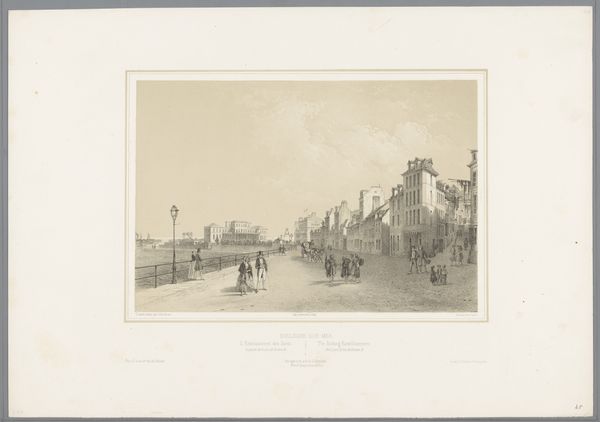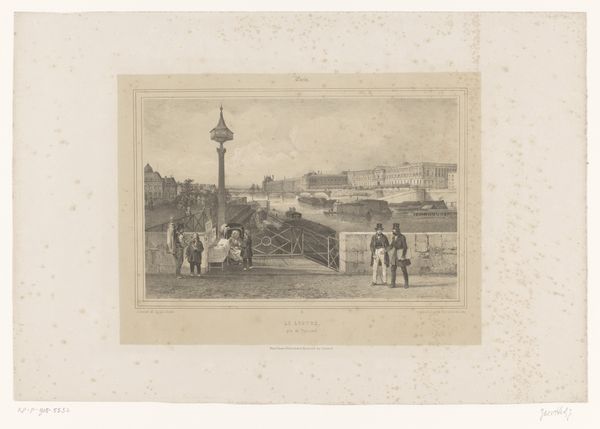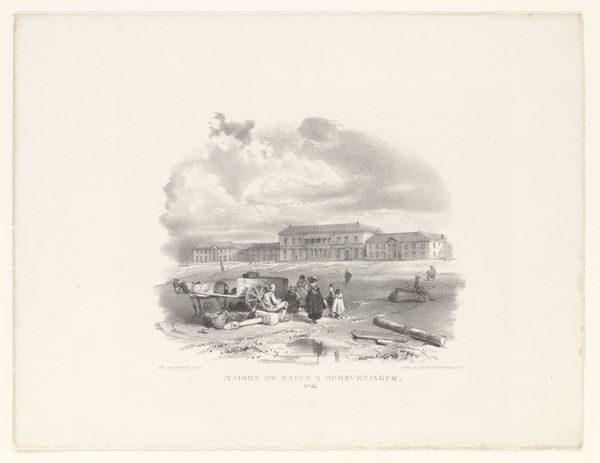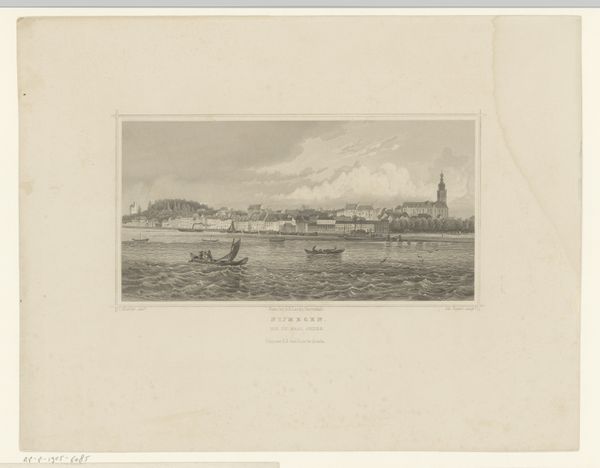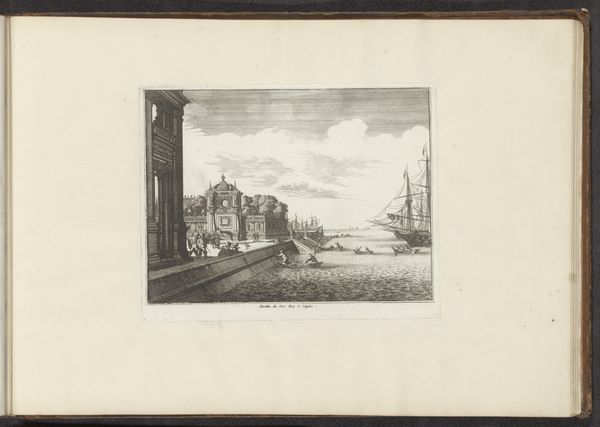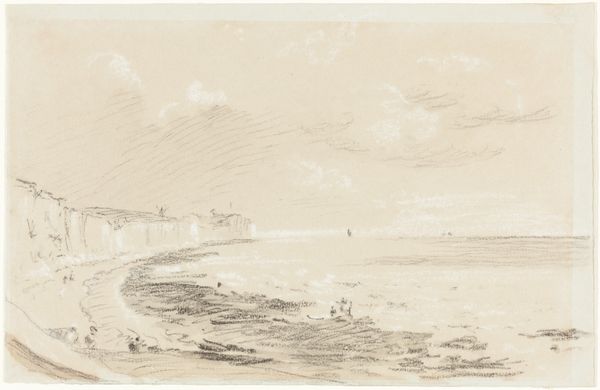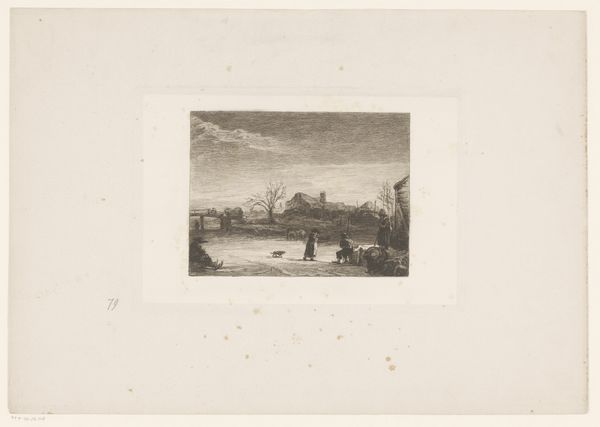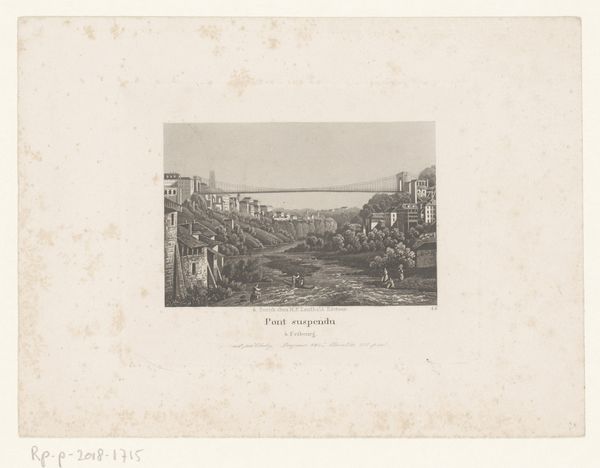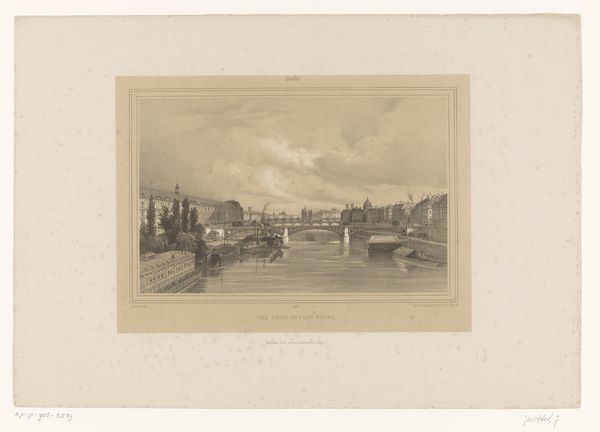
drawing, print, etching, pen
#
drawing
# print
#
etching
#
pencil sketch
#
landscape
#
romanticism
#
pen
#
cityscape
#
watercolour illustration
#
watercolor
Dimensions: height 359 mm, width 545 mm
Copyright: Rijks Museum: Open Domain
Curator: Our attention is drawn to "Zicht op Napels vanaf de haven van Mergellina," a cityscape rendered around 1847 by Charles-Claude Bachelier using etching, pen, and other drawing and print media. Editor: It's immediately striking—the almost monochromatic palette lends a delicate, antique quality to the scene. The etching possesses an airy feel, almost dreamlike, despite depicting a bustling port. Curator: The composition clearly reflects Romantic ideals. Observe how Bachelier contrasts the human figures in the foreground with the sprawling cityscape. This juxtaposition emphasizes the smallness of humanity against the grandeur of nature and the urban environment. Editor: I find it particularly interesting how the artist used a variety of marks to denote texture. The densely layered strokes evoke the rough stone of the harbor wall and buildings, providing a nice contrast against the smooth paper in areas where it has minimal drawing. Curator: Indeed, the detailed rendering speaks to the Romantic obsession with precise observation and the sublime. Consider how Bachelier's view may have played a role in promoting tourism. These idyllic depictions of Neapolitan life, circulated as prints, certainly romanticized travel to Italy. Editor: That is a fair assessment. On a structural level, notice how the walled street in the foreground cuts across the scene almost horizontally, placing the background vista almost at an oblique angle to the viewer, as if allowing only certain visual access to it. It forces the eye into the frame. Curator: One might argue that the choice of a monochromatic palette contributes to a sense of distance. It’s almost as if we're viewing the scene through the lens of memory, abstracted and refined. Editor: Ultimately, viewing the Neapolitan cityscape in this delicate composition gave me insight into the socio-political climate of nineteenth-century Italian Romanticism, while on another level the line work created a visual harmony which is in and of itself rewarding. Curator: For me, the play between the detail of the boats and the subtle textures of the cityscape make the overall composition of the print an interesting interplay between nature and Romantic architecture.
Comments
No comments
Be the first to comment and join the conversation on the ultimate creative platform.
